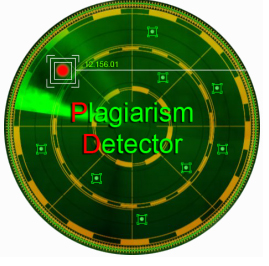CRITICAL DISCOURSE ANALYSIS: REVEALING MASCULINITY THROUGH L-MEN ADVERTISEMENT
Abstract
in this article, the writers aim to look deeper into the ideology used by L-men advertising management in making L-men advertisement which mostly used male casting and other topless act. Using critical discourse analysis, the article focus on the implicit messages convey by the L-men advertisement that it conveys about the toxic masculinity behavior in gaining men dominance is equal to have a strong and muscular body. This study uses the Fairclough model of analysis, that in the shown that the creator of the advertisement-supported the current represe about gaining muscle to gain dominance, and the society ignorance towards the issue and only look advertisement as it sells product only.
Full Text:
PDFReferences
Aditya, H., Iridiastadi, H., & Sutalaksana, I. Z. (2012). Age, Gender, and Muscle Strength: a Study Based on Indonesian Samples. MAKARA of Technology Series, 16(1), 22–28. https://doi.org/10.7454/mst.v16i1.1048
Azijah, D. P., & Gulö, I. (2020). Interpersonal Metadiscourse Markers in Jacinda Ardern Speech At Christchurch Memorial. Linguistics and Literature Journal, 1(2), 70–77. https://doi.org/10.33365/llj.v1i2.594
Bowen, G. A. (2009). Document analysis as a qualitative research method. Qualitative Research Journal, 9(2), 27–40. https://doi.org/10.3316/QRJ0902027
Elliot, K. (2018). Challenging toxic masculinity in schools and society. On the Horizon. https://doi.org/10.1093/ae/59.4.194
Ivana, P. S. I., & Suprayogi, S. (2020). the Representation of Iran and United States in Donald Trump’S Speech: a Critical Discourse Analysis. Linguistics and Literature Journal, 1(2), 40–45. https://doi.org/10.33365/llj.v1i2.293
Janks, H. (1997). Critical discourse analysis as a research tool. Discourse, 18(3), 329–342. https://doi.org/10.1080/0159630970180302
Kuswoyo, H., & Akhyar, R. (2020). Representation of People with HIV/AIDS in The Jakarta Post and Jakarta Globe: A Critical Discourse Analysis. Teknosastik, 18(2), 120–133. https://ejurnal.teknokrat.ac.id/index.php/teknosastik/article/view/778
Kuswoyo, H., & Siregar, R. A. (2019). Interpersonal Metadiscourse Markers as Persuasive Strategies in Oral Business Presentation. Lingua Cultura, 13(4), 297. https://doi.org/10.21512/lc.v13i4.5882
Lambert, V. a., & Lambert, C. E. (2013). Qualitative Descriptive Research: An Acceptable Design. Pacific Rim International Journal of Nursing Research, 16(4), 255–256.
http://antispam.kmutt.ac.th/index.php/PRIJNR/article/download/5805/5064
Magilvy, J. K., & Thomas, E. (2009). A first qualitative project: Qualitative descriptive design for novice Researchers: Scientific inquiry. Journal for Specialists in Pediatric Nursing, 14(4), 298–300. https://doi.org/10.1111/j.1744-6155.2009.00212.x
Pranoto, B. E., & Yuwono, U. (2019). Leader’s attitude towards terrorism: A critical discourse analysis of Dr. Mahathir Mohamad’s diplomatic letters. Cultural Dynamics in a Globalized World, December, 65–73. https://doi.org/10.1201/9781315225340-10
Puspita, D., & Pranoto, B. E. (2021). The Attitude of Japanese Newspapers in Narrating Disaster Events : Appraisal in Critical Discourse Study. 8(2), 796–817.
Suprayogi, S., & Budi Eko, P. (2020). the Implementation of Virtual Exhibition Project in English for Tourism Class for University Students. Academic Journal Perspective : Education, Language, and Literature, 8(2), 87. https://doi.org/10.33603/perspective.v8i2.4210
DOI: https://doi.org/10.33365/llj.v2i1.764
Refbacks
- There are currently no refbacks.
Linguistics and Literature Journal
Published by Universitas Teknokrat Indonesia
Organized by Faculty of Arts and Education
Jl. Zainal Abidin Pagaralam, No.9-11, Labuhanratu, Bandarlampung, Indonesia
Telepon : 0721 70 20 22
W : http://jim.teknokrat.ac.id/index.php/linguistics_and_literature/index










